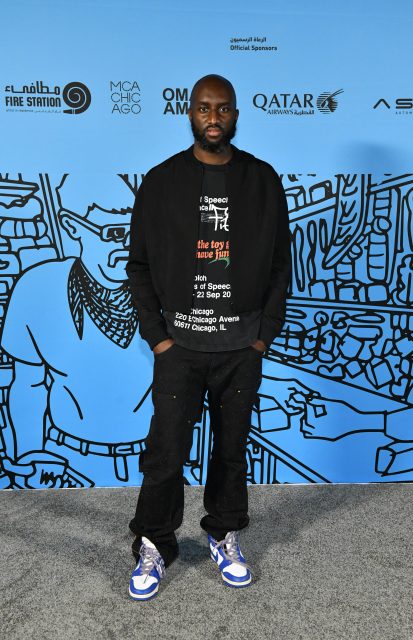Vogue fashion critic Anders Christian Madsen, who collaborated with Virgil Abloh on his Louis Vuitton show notes, recalls the process of seeing the creative director’s final collection for the house come to life at Paris Fashion Week Men’s.
Virgil Abloh designed the collection before he passed away
Before his death on 28 November 2021, Virgil Abloh had already designed his autumn/winter 2022 collection for Louis Vuitton. He went to Paris and saw prototypes, and was kept fully up to date on the collection’s progress through the many WhatsApp threads he kept with his studio. He had already come up with ideas for the show’s production and soundtrack, and even invitations and staff T-shirts had been discussed. The show we watched today in Carreau du Temple was all Virgil, but anyone who knew his work could see that from space. I also know because I collaborated with him on his novel-length show notes throughout his time at Louis Vuitton.
It was the “Louis Dreamhouse”
The show was set in a “Louis Dreamhouse” – styled with Instagram italics and a TM true to Virgil’s ways – where dancers mingled with models, furniture sprung out of the floors, beds spun around, and the Chineke! Orchestra – a highly diverse ensemble – performed an original soundtrack by Tyler, the Creator around a banqueting table. Tyler’s score was arranged by Arthur Verocai – a Brazilian composer Virgil loved – and conducted by Gustavo Dudamel, the musical director of the Opéra national de Paris. His wife Shannon Abloh sat in the audience along with Louis Vuitton’s CEO Michael Burke – who was close to Virgil – and most of the Arnault family, the owners of Louis Vuitton.
It was about imagination
Working in the Louis Vuitton studio this last week was an experience like no other. While Virgil wasn’t physically there, all his ideas came to life around us, in the garments, bags, shoes and jewellery, and his vision for the show. It felt a little bit like magic. Virgil loved magic. The “Louis Dreamhouse” encompassed a lot of the themes and messages at the heart of his eight-collection arc for Louis Vuitton. Childlike and surreal, it was about imagination: having and encouraging the imagination to become someone great, do remarkable things, and make the world a better place. Virgil believed we should see the world through the unfazed eyes of a child to whom anything seems possible.
It was a Trojan horse for the mind
Working in the Louis Vuitton studio this last week was an experience like no other. While Virgil wasn’t physically there, all his ideas came to life around us, in the garments, bags, shoes and jewellery, and his vision for the show. It felt a little bit like magic. Virgil loved magic. The “Louis Dreamhouse” encompassed a lot of the themes and messages at the heart of his eight-collection arc for Louis Vuitton. Childlike and surreal, it was about imagination: having and encouraging the imagination to become someone great, do remarkable things, and make the world a better place. Virgil believed we should see the world through the unfazed eyes of a child to whom anything seems possible.
Heaven was a theme
With premonitory poise, Virgil also imbued the collection with hints to what was going through his mind before he lost his battle to cardiac angiosarcoma, a very rare and aggressive form of cancer. Sportswear and strong silhouettes nodded at the Olympics: superhumans, who try to defy physical boundaries. Graphics on garments included imagery of supernatural and spiritual forces – time, magic, creation – but drawn like cartoons. There were wizards, animals, cherubs, clouds, climbing holds on sky-blue bags, and animations of the Grim Reaper. At the end, his two original fit models at Louis Vuitton, Omari Phipps and Alec Pollentier, came as arch angels with massive wings on their backs structured like kites. If you look back at Virgil’s work at Louis Vuitton, all these themes became more present through the collections.
Editor
Anders Christian MadsenCredit
Lead Image: Louis Vuitton






